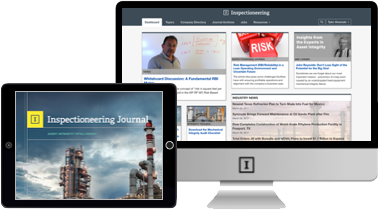Introduction
A recent study by Woodside Petroleum “estimate[d] that some 40% of engineering time is typically occupied with finding documents and reading those documents to discover what, if anything, can be useful.”[1]
Since their inception, asset integrity management (AIM) enterprise databases have been sold as “one-stop shops” for entering and recalling inspection and integrity history. However, the ability for the user to analyze and make decisions within AIM is only as good as the data that can be retrieved, and the data that can be retrieved is only as good as what was originally entered by the users.
Inspection reports from 3rd party contractors are typically created in the contractors’ own corporate report template sourced from MS Word, MS Excel, PDF, or hard copy. These reports are then duplicated as best as possible into the operator’s AIM enterprise software database. The goal of any inspection reporting workflow should be to allow data to be collected, reviewed, verified, and signed off one time in a single medium.
Within the last five years, mobile tablet and cloud technology have been merged with AIM enterprise systems, providing added value to both inspectors and operators for the purposes of inspection reporting. When a digital twin of the inspection report is provided to the inspector on the jobsite, information is being collected and shared in real time. As a result, the operator can be confident all information will be accessible when making decisions.
Today, an in-service inspection report can be completed within a process facility. Initial inspection findings can be shared with inspection crews, engineering, and management via a cloud computing connection, all while providing an accurate historical record for the operator. Welcome to the new era of AIM.

















Comments and Discussion
Add a Comment
Please log in or register to participate in comments and discussions.